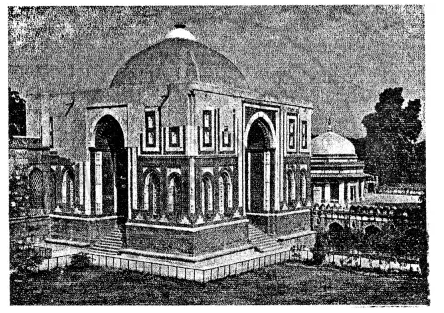Advertisements
Advertisements
Question
Answer the following question briefly:
Describe the main features of society during the Sultanate period with reference to the aristocracy.
Solution
- Privileged Class: The wealthy and powerful aristocracy was made up of high-ranking officials, nobles, and sultans.
- Land Ownership: They gathered money from peasants and ruled over enormous jagirs, or land grants.
- Persian Influence: They spoke Persian, the official court language, and followed Persian etiquette and customs.
- Lavish Lifestyle: The nobility wore beautiful attire, lived in luxurious palaces, and feasted on lavish meals.
- Dominance in Administration: They influenced governance and policy while occupying important military and administrative posts.
- Limited Social Mobility: There were few opportunities for lower classes to advance because the nobility was primarily hereditary.
RELATED QUESTIONS
This is a picture of the most beautiful specimen of Khilji architecture, which was added as an entrance to the Qutb complex in Delhi.

With reference to the reign of this ruler, mention two important features of the Market control policy
Answer the following question briefly:
Describe the important developments which took place in the following fields during the Sultanate period:
Music
Answer the following question briefly:
Describe the important developments which took place in the following fields during the Sultanate period:
Dance
Answer the following question in one or two words/ sentences:
Why was the aristocracy the most powerful social group during the Sultanate period?
Answer the following question in one or two words/sentences:
By whom were qawwalis popularized?
Answer the following question briefly:
Describe the main features of society during the Sultanate period with reference to the peasants.
Answer the following question briefly:
Discuss the distinctive features of Sultanate architecture.
This is a picture of a musical instrument used in Hindustani classical music. The name is derived from the Persian words—‘seh’ (meaning ‘three’) and tar’ (meaning ‘strings’).

During which period in medieval Indian history was this instrument invented?
What revenue reforms were introduced by Alauddin to meet heavy Army expenditure?
Describe the important developments which took place in the following field during the Sultanate period:
Medicine
